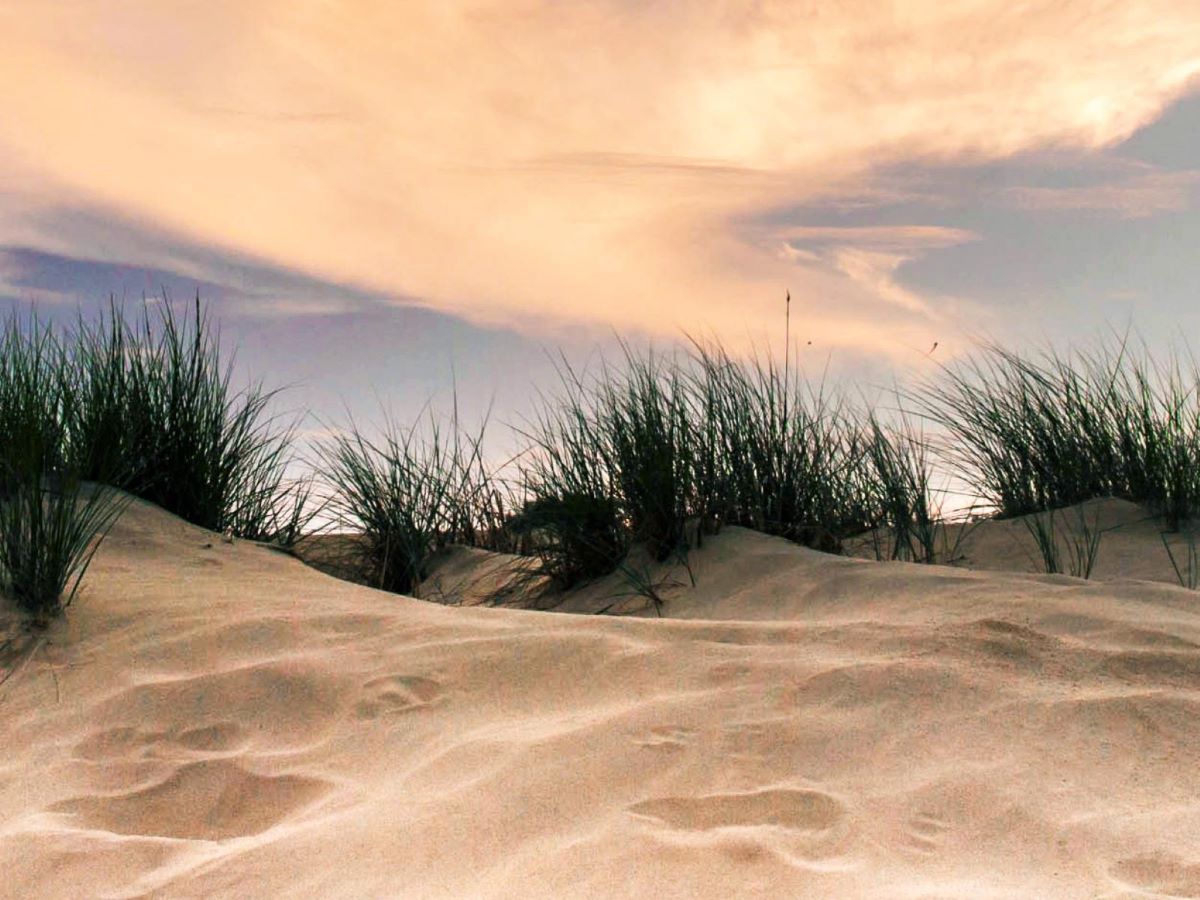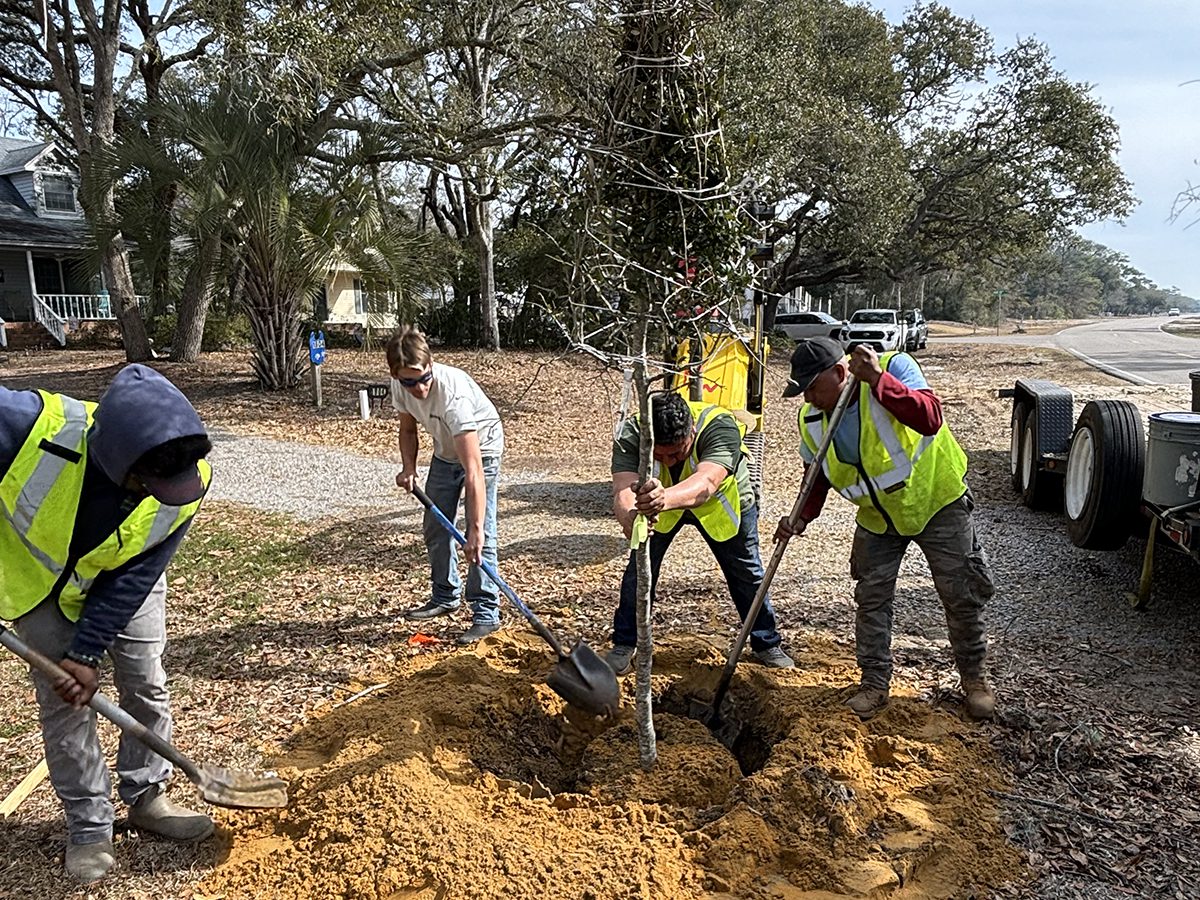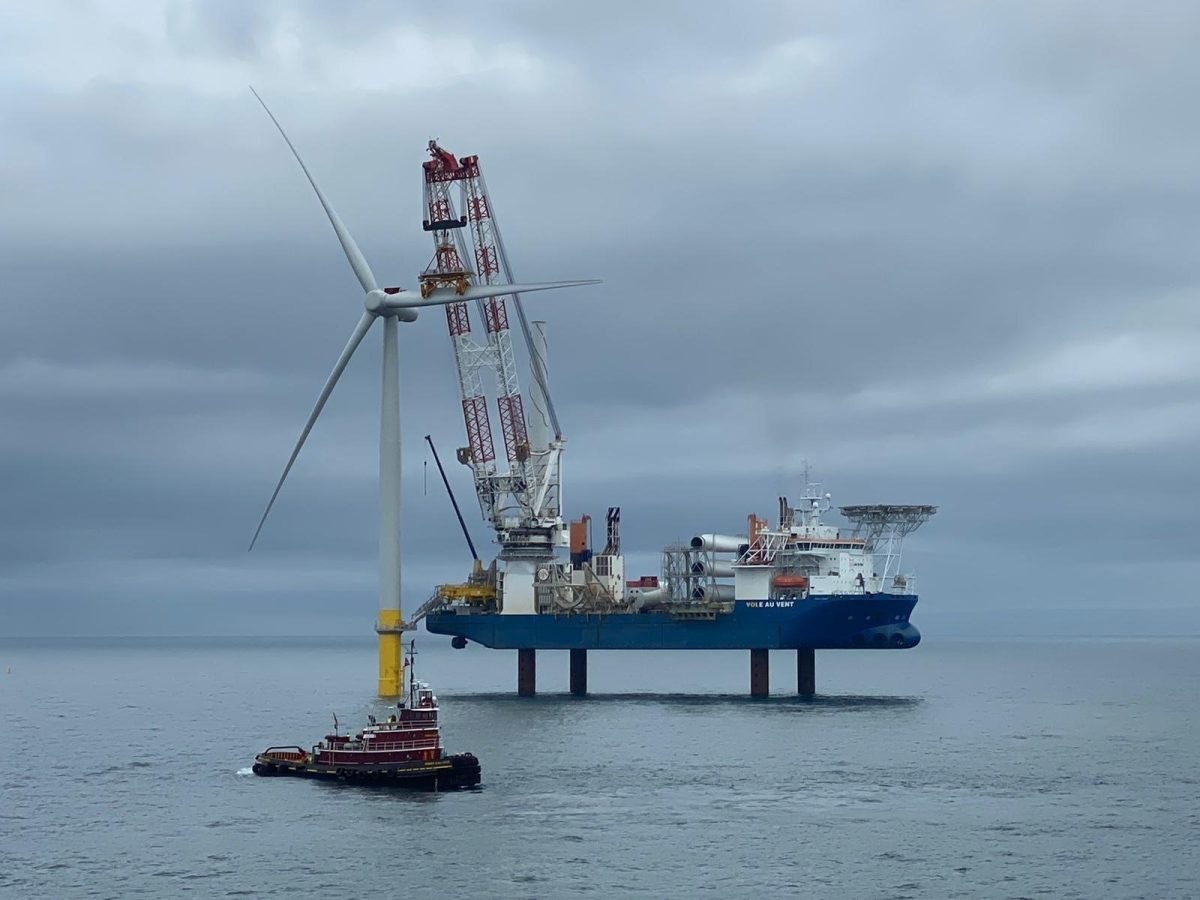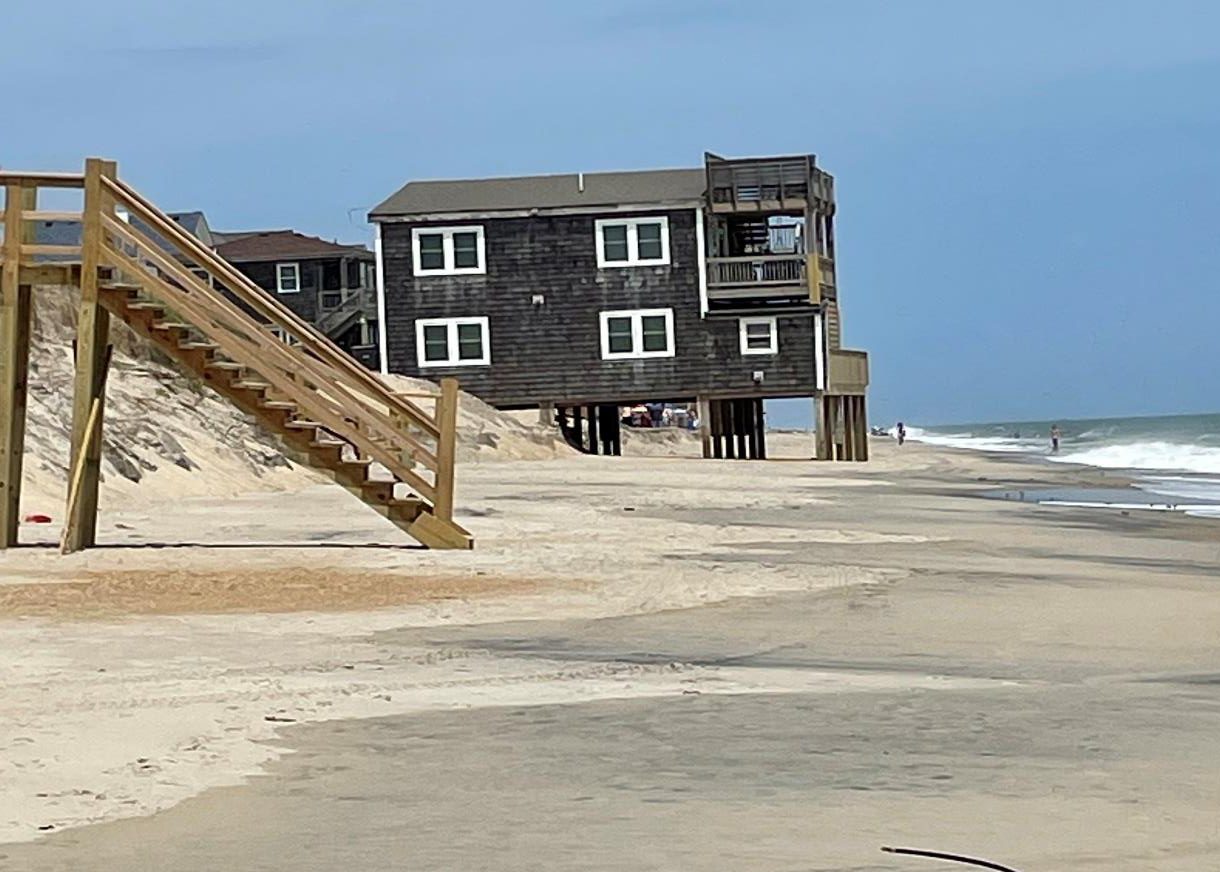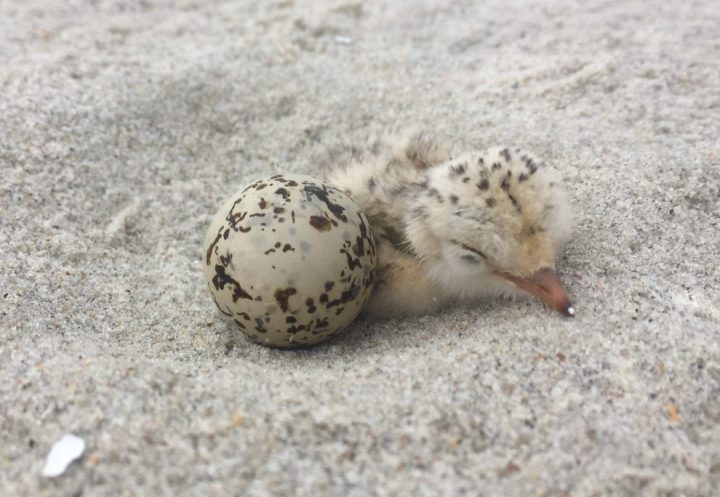
EMERALD ISLE — The cacophony of screeching least terns protecting their nests from beachgoers battled against the roar of Bogue Inlet on a cloudy, late spring day at The Point, at the westernmost tip of the island.
The warnings from the nesting birds didn’t deter a handful of volunteers from the Waterbird Stewards program, Audubon North Carolina board member Lena Gallitano and North Carolina Wildlife Resources Commission staff from checking up June 14 on the three roped-off and marked “Waterbird Nesting And Foraging Areas.”
Supporter Spotlight
From about April to August, migratory beach-nesting birds like the least tern and Wilson’s Plovers, both of special concern in North Carolina, make their home on the stretch of beach where David Greenwald, coordinator for the Waterbird Stewards, and the 20 or so volunteers visit at least once a week to make sure the birds are thriving and protected. The site has grown from one to three nesting areas, each fairly decent in size, since the program began three seasons ago.
“Every spring around March, volunteers mark the area they think the birds are going to nest in and adjust the perimeter if they’ve nested outside of the marked area,” Greenwald, of New Bern, explained.
At each visit, volunteers fill out a form to record what they’ve observed.
“We try to count the number of birds we’re seeing in the nesting area, then the nests and, as time progresses over the summer once they’ve hatched, the number of chicks we see,” Greenwald added. “Most of what we’re seeing at The Point are least terns with the second-most frequent being the Wilson’s plover.”
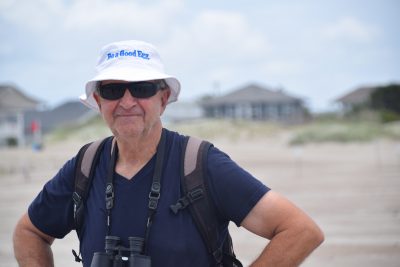
Greenwald said that The Point attracts the birds because they like to be out in the open.
Supporter Spotlight
“They love to nest completely on the sand. They scoop out a tiny little swale, almost like a saucer cup depression, and that’s where they lay their eggs. Their eggs are so well camouflaged in the sand, it’s really hard to see. They’re also very small and that’s the problem. It’s why we set up these posts and flags,” he said.
Greenwald added that while they’re small, they’re fierce and protective of their nesting area. “They will dive bomb and have been known to whack you on the head with their beaks. You really know it when you’re getting close. There will be multiple least terns flying and screeching and trying to get you away from the nesting area.”
Gallitano added that a brochure from Audubon North Carolina being distributed at various locations in Emerald Isle explains that one of the protective mechanisms for the least terns is dive bombing.
“If the birds are dive bombing you or being very disturbed or flying up from the sand, you’re too close. That’s one of the easiest ways to know that you should start looking where you’re putting your feet, because not only are the eggs tiny and totally camouflaged, but the babies are too,” Gallitano said.
There’s a reason why you’ll find swarms of least terns on the beaches: They’re colonial nesters.
“They like to be part of a larger group. You won’t necessarily find one nest by itself somewhere,” Gallitano explained, adding that they are long-distance migrants. “They don’t hang around here in the wintertime, which makes it even more amazing that they can come back to the same place and nest again.”
The Emerald Isle Waterbird Stewards Program volunteers work under the supervision of Sarah Schweitzer, a wildlife diversity biologist with the Wildlife Resources Commission. She is responsible for coastal waterbirds from Virginia to South Carolina.
“This has been great to start this program here to get people engaged and helping with birds,” Schweitzer said.

The nesting least terns at The Point were discovered by a junior naturalist, Schweitzer explained. The middle-schooler was vacationing with her family and reported to the Wildlife Resources Commission that she thought she saw birds nesting at The Point.
The first year, the volunteers posted signs to keep beachgoers from walking in the area where the birds were nesting, she said, and they have since kept an eye on the site. The following year, they found that more birds were nesting there.
The Point wasn’t always so hospitable for nesting birds due to its diminished beachfront. In 2005, there was a sizeable engineering project with the Corps of Engineers to relocate the inlet. Schweitzer explained that as part of that project, there was a management plan put in place to protect the birds and foraging sites too, which is why Wildlife Resources Commission staff kept an eye on The Point.
There were no nesting birds there because of the disturbance caused by the dredging project. Now that time has passed and more sand has been added to the shoreline, birds have started to use it, she added.
Annika Andersson, wildlife diversity technician with the Waterbird Investigations and Management Project for Wildlife Resources Commission, in an email response said that the number of breeding least terns at the Emerald Isle colony can fluctuate over the season, as more birds may arrive and nest for perhaps a second or third try, if earlier attempts failed.
“The highest count we have had so far this season, that I’m aware of, was earlier this month: 45 nests and about 160 adults. For comparison, the first year of the stewards program, in 2015, the stewards monitored at least 145 tern nests,” Andersson said. “We never really know what to expect. A number of variables, including predation, weather and human activity/disturbance, can have an effect on the success of the birds and how many we see year-to-year.”
She responded that during the visit June 14 when the volunteers and staff were expanding the posted area so it encompassed the growing number of nests, “We were rewarded to find a single (adorable!) very new and well-camouflaged chick, still cradled next to its unhatched sibling in their nest. The first that most of us have seen this season.”
“Everyone can help NC’s beach-nesting birds survive by respecting such posted bird areas along the coast,” Andersson said.
Andersson added that there are several pairs of Wilson’s Plovers nesting at The Point that the stewards monitor as well. “These birds also lay their eggs in a simple shallow scrape in the sand, like the terns, but often line it with bits of shell or other natural debris, or nestled near some vegetation.”
Gallitano, who became involved after a visit three years ago with a stewards volunteer, returned last summer to the nesting site to check on the progress. She has been part of Audubon Raleigh since the 1980s and Audubon North Carolina for about 10 years. She is currently serving her second term on the board of directors.
“I got passionately involved, as I often do with bird projects, and tried to get Audubon North Carolina involved,” she said.
Gallitano reached out to the Audubon staff in Raleigh about re-using the Be A Good Egg program initiated in Wrightsville Beach that ended about three years ago. Audubon relaunched the website referring to the same information on coastal birds and provided bumper stickers, magnets, T-shirts and backpacks for the Waterbird Stewards volunteers in Emerald Isle.
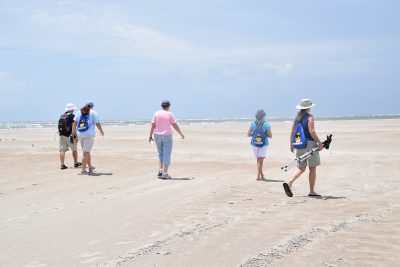
Greenwald said that something he’s observed over the three years is the commitment of the volunteers. “Your heart goes out to the vulnerability of shorebirds and when they see the chicks, they see the eggs. … You just get attached to them and that’s what I’m observing as one of the key attracters for the stewards. I’ll certainly say that about myself.”
Their work often attracts curious bystanders, as well.
“We often have people come up to us when they see us with our binoculars or spotting scope. That’s our opportunity to explain and give them some information,” Greenwald said. “Once they understand what we’re doing and why we’re doing it, they’re very supportive.”
Next year, the volunteers plan to host walks in the summer to share information about the nesting birds, like Audubon has done in Wrightsville Beach.
This effort in Emerald Isle has been with the full backing of town administration.
“The town manager is very supportive of what they do out there,” Schweitzer said.
Emerald Isle Town Manager Frank Rush said in email that the town is pleased to assist the Waterbird Stewards Program, and supports their efforts to preserve the habitat for beach-nesting birds at The Point.
“The Town has worked hard over the years to preserve The Point – for shoreline protection, recreational use, navigation, and natural habitat preservation goals – and we’ve been able to strike an effective balance in our management plans,” Rush said in the email. “We expect to continue this management approach in the future, and look forward to continuing our relationship with the Waterbird Stewards Program.”



